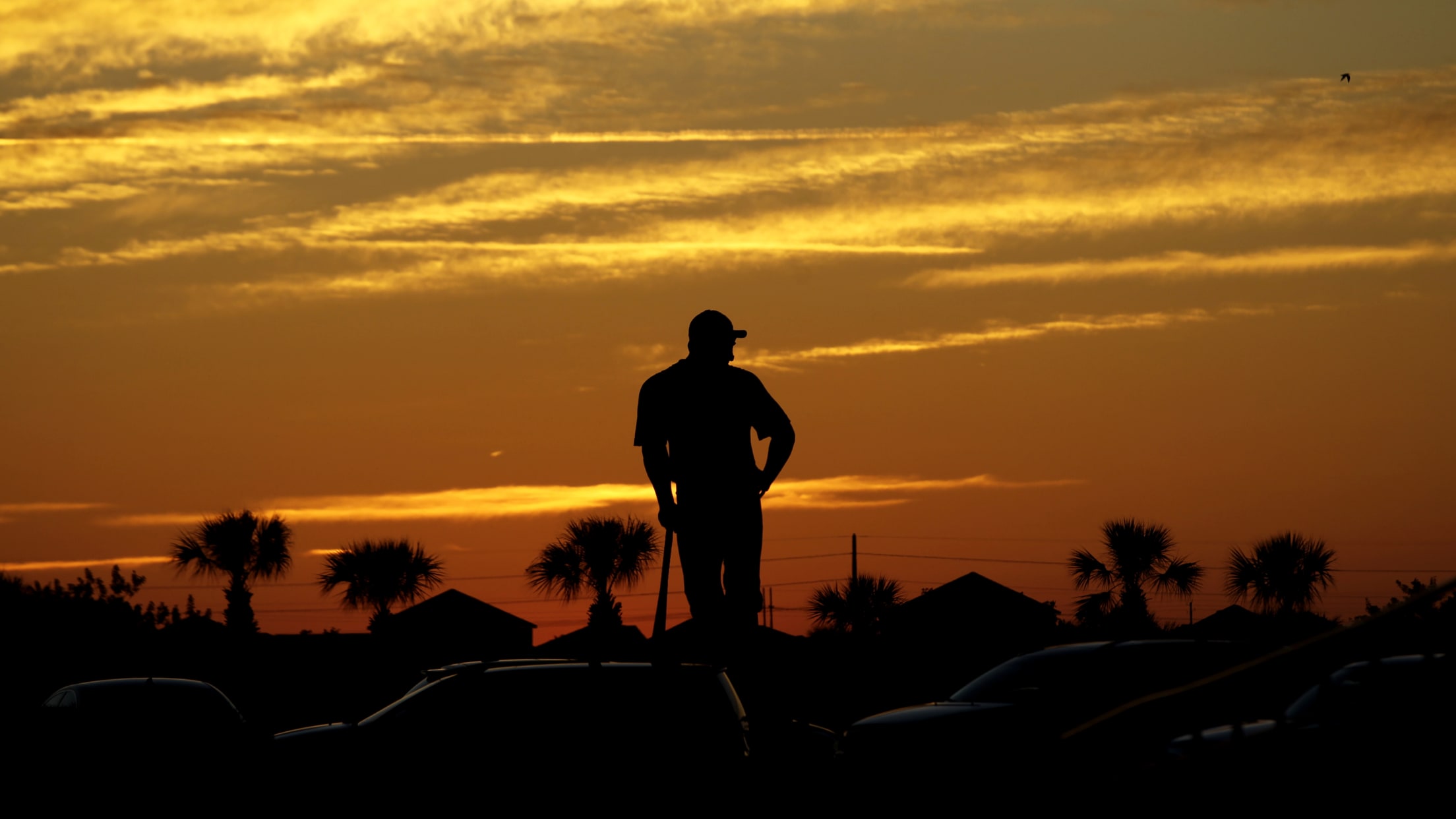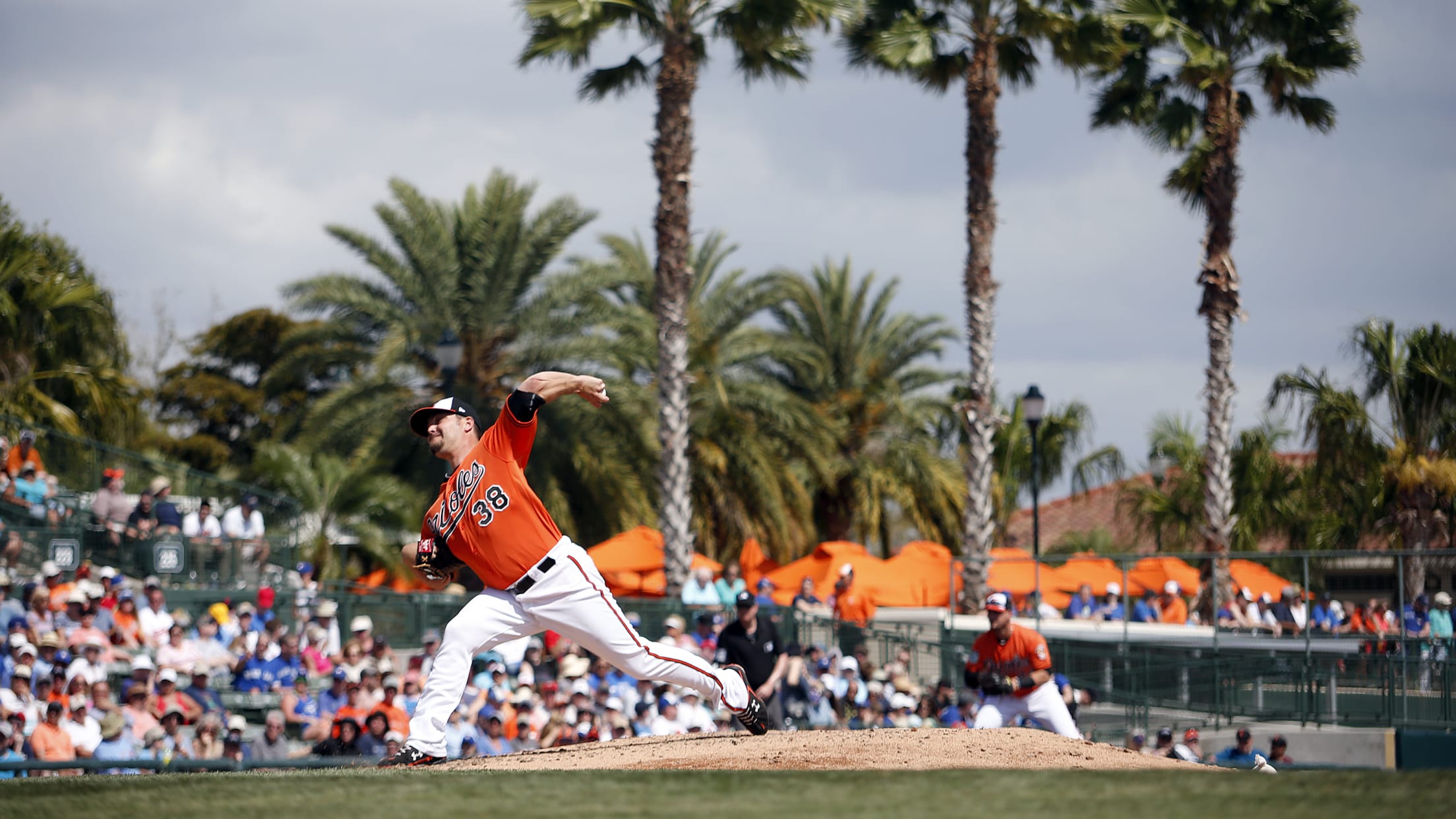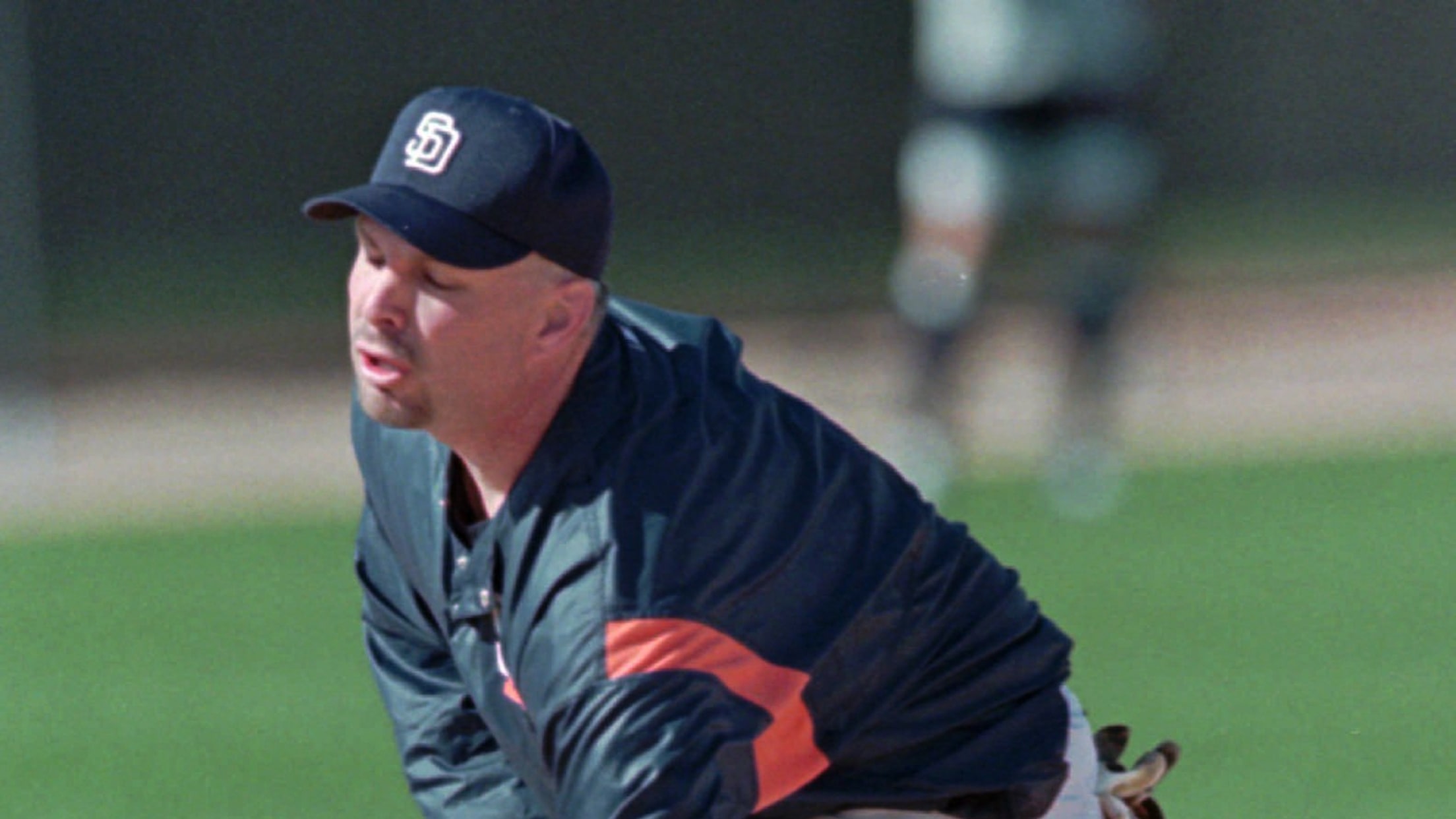So, what exactly is Spring Training?

You've seen the tweets. You've read the blogs. Maybe you've seen it outside your window -- winter bowing its head and crawling back under its earthly shell so spring and, most importantly, baseball can begin.
Yes, it's time for Spring Training to commence. But what exactly does that all mean?
Why do pitchers and catchers have to go earlier than everybody else? Are they in trouble? Why is the Grapefruit League called the Grapefruit League? Do the games even matter? All your questions can finally be answered below.
When and why did Spring Training start?
It all started in 1886. Most of the teams (there were only 16 at that point) were from parts of the country where it was cold in the winter and spring, and they were forced to practice inside gymnasiums. So Albert Spalding, president of the Chicago White Stockings, wanted to find a warmer climate for his players to get outside and get in shape for the upcoming baseball season. Spalding and White Stockings manager Cap Anson chose Hot Springs, Ark., as the location. It had good weather, mountains for hiking and, most importantly, hot springs to "boil out the alcoholic microbes in the hard-living players."
Red Sox spring training hike, Hot Springs, Arkansas, 1912 https://t.co/u8H67VnK4u pic.twitter.com/XtHApV1McO
— Meredith Frost (@MeredithFrost) February 14, 2017
More teams made their way down during the following years and actual games could be played. Ty Cobb, Cy Young and Babe Ruth -- along with his 500-foot home runs into alligator farms -- called Arkansas their home for the month of March. By the 1920s, teams moved on to ever-warmer temperatures and places with better -- and newer -- practice facilities. Florida, California and international hot-spots like Cuba became favorites. But the two main points of organized spring baseball eventually evolved toward Arizona (Cactus League) and Florida (Grapefruit League).
What made teams go to Florida and Arizona?
The mayor of Tampa coaxed the Cubs to his city by promising to pay player expenses ($100 per) in 1913. He had visions of Florida becoming the epicenter of preseason baseball, and he was right. Eventually, the Indians, Athletics, [St. Louis] Browns and Cardinals followed the Cubs, and Grapefruit League play began during the 1914-15 seasons. The Phillies, who were the first team to work out in the Sunshine State at the end of the 19th century, would join the league from Bradenton, Fla., in 1915. Florida was the only official spring site for many years afterward. Today, mostly for geographical reasons, the Grapefruit League includes the Braves, Orioles, Red Sox, Tigers, Astros, Marlins, Twins, Mets, Yankees, Phillies, Pirates, Cardinals, Rays, Blue Jays and Nationals.
It wasn't until 1947 when baseball innovator Bill Veeck set the Cactus League in motion. Two years before, Veeck was the owner of a Brewers' Triple-A team, but after experiencing the cruelty of the Jim Crow South firsthand in Florida, he decided to sell the team and move to his ranch in Tuscon, Ariz. Alas, Veeck couldn't stay away from baseball for long. He purchased the Cleveland Indians in '47, signed Larry Doby -- the American League's first African-American player -- and decided to have the team train far away from Florida in Mesa, Ariz.

Veeck (and some magical mineral water) convinced the New York Giants to join him. The Cubs, who had been training in Catalina Island, Calif., at that point, moved to Mesa in 1951 and the Orioles went west in '54. Those four teams formed the first iteration of the Cactus League. The Red Sox joined during a brief stay in Scottsdale, Ariz., and when MLB expanded in the early 1960s, the Los Angeles Angels and Houston Colt 45s spent most of their preseason months in the state. Today, again mostly for geographic reasons, the Cactus League includes the Reds, D-backs, Cubs, Indians, Rockies, White Sox, Royals, Angels, Dodgers, Brewers, A's, Indians, Giants, Mariners and Rangers.
OK, but why are they called the Grapefruit and Cactus Leagues?
As far as I can tell, the Cactus League is called the Cactus League because there's a bunch of cacti in Arizona? That's it.
The Grapefruit League, on the other hand, has an amazing story surrounding its name. In 1915, around the time when more teams settled in Florida and the league was beginning to get underway, an aviator by the name of Ruth Law was dropping golf balls on a course as part of a promotion. The Brooklyn Dodgers' camp was nearby in Daytona Beach, and players had the bright idea of Law dropping a baseball 500 feet out of her plane for somebody to catch.
Of course, things went awry. Manager Wilbert Robinson grabbed a mitt and volunteered to be the target. Unfortunately, Law forgot the ball and instead used a grapefruit from one of her ground crew's lunch boxes. It splattered all over Robinson and the 53-year-old yelled in pain, thinking the juice was his own blood spraying from his chest. Thankfully, he was fine and his sacrifice birthed a brand new baseball league.
Why do pitchers and catchers report earlier than everybody else?
It's the traditional countdown to baseball: the number of days until "pitchers and catchers report." But why are they first? It's not necessarily because they need more time together, but more that there are so many pitchers -- sometimes 30 or more -- and teams need to get rid of the ones they don't need. The tradition, according to The Sporting News, has gone back nearly 100 years. Well, at least until after the teammates finished chopping wood.
The first time the phrase "pitchers and catchers report" appeared in Sporting News (March 20, 1924). pic.twitter.com/GL92M8lnSr
— Sporting News MLB (@sn_mlb) February 16, 2016
What are the stadiums like? What's the best one?
They're amazing. Small and intimate, but with MLB's biggest stars. It's relatively easy to get autographs from your favorite players, have a front-row seat to your team's best pitcher warming up down the line or hear sounds you wouldn't normally hear at a giant stadium during the regular season. You know, like cleats hitting the ground:
Ah, the sites & sounds of Spring Training! #CactusCrew pic.twitter.com/zlHj5QsRnS
— Milwaukee Brewers (@Brewers) February 23, 2015
Just recently, Surprise Stadium -- home of the Royals and Rangers -- was ranked as the best in the Cactus League. Over the last few years, it's upgraded its seats, added two new craft breweries and, most significantly, introduced the sriracha ketchup-infused High Heat Dog.
The Orioles' Ed Smith Stadium in Sarasota was voted No. 1 by fans in Florida, and it is beautiful. Renovations in 2011 brought in crab cake and Maryland crab soup concessions, while the orange and green colors give it a very pleasing, tropical feel:

I'm partial to JetBlue Park, the Red Sox's facility in Fort Myers. It's just like Fenway Park, but without the high prices or seats behind poles. There's even a mini Green Monster!
Got it. So, does Spring Training matter? Do teams who win the Grapefruit or Cactus League go on to win the World Series? Do players who have great springs have great regular seasons?
Spring Training stats don't, and never have, counted toward a team or player's official records. That's why you'll see teams invite celebrities down to live out their dreams on the baseball diamond. Will Ferrell notably suited up for all 10 teams in the Cactus League a few years ago. Sort-of baseball players like

Is there some correlation between individual or team success from spring to summer? There can be. Just look at last year: The Red Sox won the Grapefruit League and went on to win the World Series. The Yankees did the same in 2009. That being said, the Cubs finished second-to-last in the Cactus League in '16 and won that year's Fall Classic. As noted by SB Nation in 2015, the correlation is generally pretty minute.




